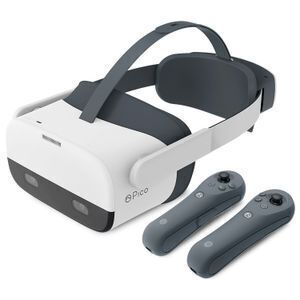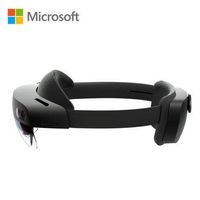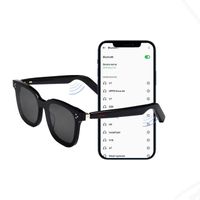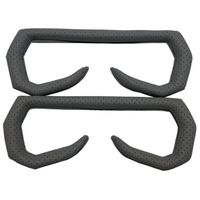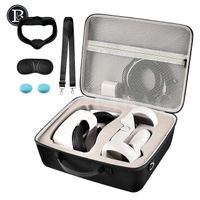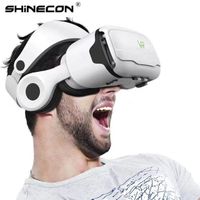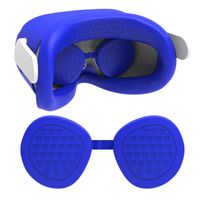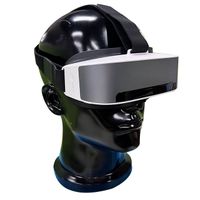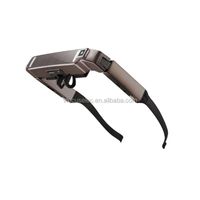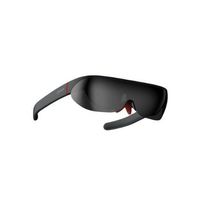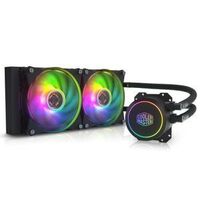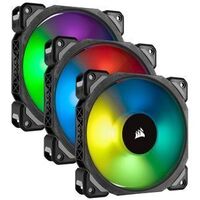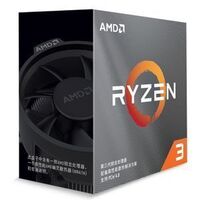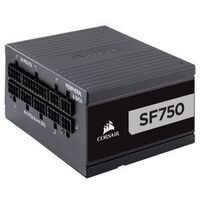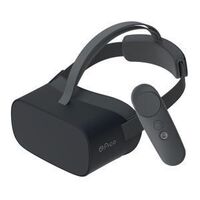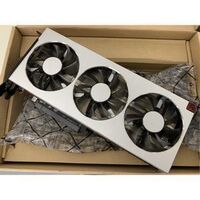PICO NEO 2 EYE All in One VR Headset with 4K 75Hz Resolution 6Dof Controller Standalone Headset with Integrated Eye-tracking
-
Supplier: Shenzhen Kezan Information Technology Co., Ltd. -
Region: Guangdong, China -
Contact: Mr Dave Yan -
Price: $595.00 /piece -
Min. Order: 1 piece
| Model Number: | NEO 2; | FOV: | 101 Degrees; |
| Certification: | ce; | For data and device charging: | USB Type-C; |
| Headset battery: | 4500mAh; | Selling Units: | Single item; |
| Packaging Detail: | Stanard Packaging; | Single gross weight: | 4.0 KG; |
| Processor: | Qualcomm Snapdragon 45; | Single package size: | 45X35X25 cm; |
| Power and batter: | QC3.0 fast charging; | Package Preview: | ; |
| Place of Origin: | Guangdong China; | Resolution: | 3840 * 2160; |
| Brand Name: | PICO; | Display: | 4K 5.5 inch; |
| Adjustable IPD: | Supported; | Refresh rate: | 75 Hz; |
| Storage: MicroSD: | Support Micro-SD card up to 256GB; |

PICO NEO 2 All in One VR Headset with 4K 75Hz Resolution 6Dof Controllers Qualcomm Snapdragon 845 Processor
Neo 2 Specs
- Resolution – 3,840 × 2,160@75Hz, PPI: 818, 5.5 inch x 1 VR TFT
- FOV – 101 degree,Fresnel lenses
- IPD – Adaptive, 55mm – 71mm
- Tracking – Inside-out 6DOF Head tracking and Guardian System
- Controllers – 6DOF haptic controllers
- Audio – Integrated Spatial stereo speaker, Dual Mic EC/NR, 3.5mm Jack
- Connections – USB-C 3.0 Extendable 3.5mm Power DC Jack
- Eye Tracking (Neo 2 Eye) – Gaze data output frequency (binocular), 90Hz refresh
Eye Tracking Specs
Gaze data output frequency (binocular)
90Hz
Calibration
5-point calibration
Eye Tracking Interface
Pico SDK
Data output (eye tracking data) *
- Gaze direction (combined)
- Gaze origin (combined)
- Position guide
Ideal accuracy for eye rotation
0.5 degrees
Gaze angles
25° left/right/down and 20° up
SDK engine compatibility
At the recent CES event, Pico Interactive, Inc. (Beijing, China) debuted two new VR headsets called the Neo 2 Standard and Neo 2 Eye. Both of the headsets are based on the same basic platform consisting of Qualcomm's Snapdragon 845 chipset and Wi-Fi 5. The main difference between the two is that the Eye model includes an integrated eye tracker.
In many use cases, the Neo 2 will operate in standalone mode, which relies fully on Snapdragon 845 processing in conjunction with 128 GB of on-board storage and an SD card slot. One aspect of the use of the Snapdragon 845 is access to the Qualcomm’s Boundless XR technology. XR refers to Extended Reality, an umbrella term that includes augmented reality, virtual reality and mixed reality. Qualcomm explains that the company’s so-called Boundless XR “creates immersive mobile XR experiences with photorealistic visuals by combining on-device processing, 5G, and edge cloud processing.” More specific to the Neo 2, Boundless XR enables the headset and PC “to share real-time processing responsibilities, delivering a responsive, low-latency viewing and listening experience.”
Pico Neo 2 is mechanically well balanced thanks to the counterbalancing effect of the battery which is mounted at the rear of the headband. The battery provides power for the headset which can be operated either wirelessly, connected to a PC, or in a standalone mode. The batteries can power the headset for 3 - 4 hours given typical use. The fit of the headband can be adjusted with just one hand using a single ratchet knob located on the headband at the back of the headset. The head mounting frame also includes a rubbery overhead strap that has several fixed length settings. Stereo speakers are integrated into the headband. The Neo 2 is white and the Neo 2 Eye is dark grey.
The Neo 2 includes the capability of 6 DOF inside out tracking of the user’s head and hands. The low latency tracking is based on a Northern Digital Inc. Atraxa controller platform. This is a sensor-fusion tracking technology specifically designed for extended reality platforms. The technology fuses data from an on-board electromagnet and an inertial measurement unit. One consequence of this means of tracking is that the system does not suffer from occlusion. An example of what this means is that the hand held controllers can be tracked even when positioned behind the back of the user. When tracking the user’s head, the tracking system also utilizes input from two cameras positioned on the front of the headset.
The two electromagnetic 6 DOF controllers connect to the headset using Bluetooth 5.0. Located on the bottom of each controller is a click-to-grip trigger button.
The features and operation of the Neo 2 headset and the controllers are discussed and demonstrated in several on-line videos. One representative video recorded live at the CES exposition can be found at the end of this article. The figure below illustrates the Neo 2 Eye headset and one of the controllers.
Each of the Neo 2 headsets includes a single LCD having a 4K resolution of 3840 X 2160. The resolution is divided between the two eyes providing a resolution of 1920 × 2160 to each eye. The optical system in the headset provides a 101 degree field of view. The Neo 2 uses software to implement interpupillary distance adjustment within a range of from 55 mm to 71 mm.
The Neo 2 Eye headset uses foveated rendering. (The fovea is a small depression in the retina where visual acuity is highest.) The technique is intended to improve performance, allowing for higher frame rates and more complex scenes. This is accomplished by rendering the scene at full resolution only where the user’s eye is looking, while reducing resolution in the periphery. The eye tracking is accomplished in the Neo 2 Eye by a Tobii AB (Danderyd Sweden) eye tracker. The Eye also includes somewhat more RAM needed to accommodate the operation of the eye tracking.
Powered by Qualcomm’s Snapdragon 845 processor with Boundless XR, the six degrees of freedom (6DOF) Pico Neo 2 line of standalone headsets includes both the Neo 2 and Neo 2 Eye.












-
PU Mask Case Replacement Eye Mask Cushion Cover for Oculus Quest 2 VR Virtual Reality Glasses Accessories

-
HoloLens 2 TOF depth of field sensor AI with smart headset MR helmet AR glasses full

-
Custom Sports Glasses OEM 2022 Light BT 5.2 Bluetooth Smart Glasses Sunglasses UV400 Headphone HIFI Polarized Sound Driving

-
Custom Soft Sponge Foam Cushion Replacement VR Mask Eye Pad Cushion Mask

-
Carrying Case Compatible with Advanced Virtual Reality Headset Touch Controllers Elite Strap VR2 Case

-
New SHINECON metaverse 3d box glasses virtual reality all-in-one vr headset with remote control

-
Lens Protective Cover Dust and Scratch Resistant VR Lens Cover Replacement for Oculus Quest 2 VR Accessories

-
High-quality smart wearable VR all-in-one machine is the best choice for ultra-thin VR applications

-
New Android Wifi 3D Glasses For Mobile Video Cinema Support AR Software Smart 3D Player With Camera

-
Metaverse Portable Cinema Glow Dragon Smart Mr Hybrid Reality Ar Glasses 3d Mobile Cinema VR AR Glasses Equipment

Other Products
-
 $143.00 / piece
$143.00 / piece -
 $96.99 / piece
$96.99 / piece -
 $115.00 / piece
$115.00 / piece -
 $139.99 / piece
$139.99 / piece -
 $345.00 / piece
$345.00 / piece -
 $829.99 / piece
$829.99 / piece

